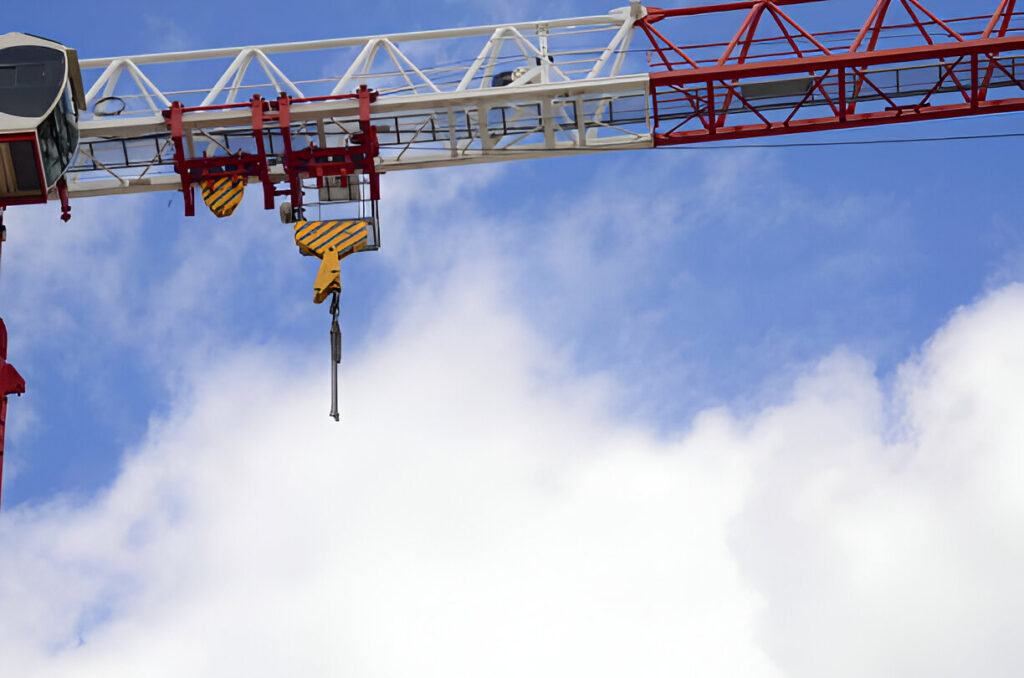Understanding Suspended Platforms
Suspended platforms are key tools in construction. They let workers reach high places safely. These platforms come in different types and have important parts that keep them working well.
Types of Suspended Platforms
Swing stages are a common type of suspended platform. They hang from the top of a building and move up and down. Workers use them to clean windows or fix building exteriors.
Another type is the work cage. It attaches to a crane and lifts workers to hard-to-reach spots. This is great for short jobs in areas without easy access.
Bosun’s chairs are for one person. They’re good for small tasks like touching up paint or checking small areas.
Key Components of Suspended Platforms
The suspension mechanism is crucial. It includes strong cables or ropes that hold the platform. These connect to a solid support on the roof or ground.
Counterweights balance the platform. They make sure it stays steady and doesn’t tip over.
Safety features are a must. Guardrails keep workers from falling. Harnesses attach workers to a separate safety line.
The platform itself needs to be strong. It should hold the weight of workers, tools, and materials without bending or breaking.
Control systems let workers move the platform up, down, or sideways. These need to be easy to use and respond quickly.
Safety Protocols for Suspended Platform Use
Working on suspended platforms comes with risks. Following proper safety measures is key to avoiding accidents and injuries. Let’s look at some important safety protocols to keep in mind.
Fall Protection Measures
You need to use fall arrest systems when working on suspended platforms. Wear a full-body harness and connect it to an anchored lifeline. Make sure your harness fits well and is in good condition.
Check that guardrails are in place and secure. Don’t lean over or climb on guardrails. Use a lanyard to tie off tools so they don’t fall.
Keep the platform tidy to avoid trip hazards. Don’t overload the platform – follow weight limits. Stay alert and focused on your work. Take breaks if you feel tired or dizzy.
Electrical Hazards and Preventions
Be careful of power lines near your work area. Keep a safe distance – at least 10 feet away. Use insulated tools and equipment when working near electrical sources.
Check all cords and plugs for damage before use. Don’t use electrical tools in wet conditions. Wear rubber-soled shoes for extra protection.
Use GFCI outlets to prevent shocks. Turn off power when not in use. Know where the main power shutoff is located. If you see sparks or smell burning, stop work right away.
Emergency Response Planning
Have an emergency plan ready before you start work. Know how to lower the platform quickly if needed. Practice emergency procedures with your team.
Keep a first aid kit and fire extinguisher on the platform. Make sure you can easily reach emergency services. Have a system to alert others if you need help.
Learn basic first aid and CPR. Know the signs of heat stress and how to treat it. Have a plan for bad weather like high winds or lightning. Don’t take chances – if conditions seem unsafe, stop work and reassess.
Compliance with OSHA Standards
OSHA rules are key for safe suspended platform use. You need to follow their guidelines to keep workers safe and avoid fines. Let’s look at two main areas of OSHA compliance.
Certification and Inspections
You must get your suspended platforms certified before use. A qualified person should check them yearly. Keep these records on-site:
- Platform test results
- Load capacity info
- Safety device checks
Do daily visual checks too. Look for:
- Wear and tear on cables
- Loose bolts or connections
- Working emergency stops
If you spot issues, don’t use the platform until it’s fixed. Safety pros can help you set up a good inspection plan.
Training for Safety and Operation
Your workers need proper training to use suspended platforms safely. OSHA says you must teach them:
- How to use fall protection gear
- Platform weight limits
- Emergency procedures
Hands-on practice is a must. Let workers try the controls in a safe, ground-level spot first.
Keep training records for each worker. Update their skills yearly or when you get new equipment.
Make sure everyone knows the rules:
- Always wear harnesses
- Don’t overload the platform
- Check weather before use
Regular safety talks can help keep these rules fresh in mind.
Maintenance and Monitoring Best Practices
Keeping suspended platforms in top shape is key for safety and smooth work. Regular checks and good record-keeping make a big difference.
Regular Maintenance Schedules
Set up a clear plan for checking your suspended platforms. Look at them before each use and do deeper checks weekly or monthly. Follow the maker’s guide for what to check and how often.
Check the cables, hooks, and brakes carefully. Look for any wear or damage. Test the motors and controls to make sure they work right. Clean off any dirt or debris that could cause problems.
Don’t forget about the safety gear. Check harnesses, lanyards, and anchor points often. Replace any worn-out parts right away. Keep spare parts on hand for quick fixes.
Record-Keeping and Log Books
Write down everything you do to take care of your platforms. Use a log book to track each check, fix, or replacement. This helps you spot patterns and plan ahead.
Note who did the work and when. Write down what you found and what you did about it. If you replace parts, write down which ones and why.
Keep your operation manual handy. Use it to guide your checks and fixes. Add notes about any special issues or tricks you’ve learned.
These records can help if there’s ever an accident or inspection. They show you’re taking good care of your equipment. They also help new workers learn the ropes quickly.
Strategic Planning and Assessment
Good planning and risk management are key to using suspended platforms safely and efficiently on construction sites. By creating detailed work plans and assessing potential hazards, you can set your project up for success.
Developing a Site-Specific Work Plan
When preparing to use suspended platforms, you need a tailored work plan for your construction project. Start by mapping out the specific tasks that require elevated work. Think about the best locations to position platforms for optimal access and productivity. Consider factors like the building’s structure, nearby obstacles, and weather conditions.
Your plan should outline:
- Platform setup and dismantling procedures
- Daily inspection checklists
- Worker training requirements
- Communication protocols
Don’t forget to include a schedule for platform use. This helps coordinate with other site activities and ensures efficient resource allocation. Review and update your plan regularly as the project progresses.
Risk Assessment and Mitigation Strategies
Before using suspended platforms, you must identify and address potential dangers. Conduct a thorough risk assessment of your work area. Look for hazards like:
- Falling objects
- Unstable surfaces
- Overhead power lines
- High winds
For each risk, develop specific mitigation measures. This might include setting up exclusion zones, using protective netting, or establishing wind speed limits for platform operation.
Create an emergency response plan too. Make sure everyone knows what to do if something goes wrong. Practice rescue drills so your team is prepared for any situation.
Remember, good planning keeps your workers safe and your project on track!
Elevating Construction Efficiency and Safety
Using suspended platforms safely and efficiently can boost your construction project’s success. Let’s explore key strategies to improve both productivity and worker protection.
Integrating Sustainable Practices
You can make your suspended platform use more eco-friendly. Try using energy-efficient motors to power your platforms. This cuts fuel costs and reduces emissions.
Look for platforms made with recycled materials. They’re often just as strong but better for the planet.
Train your crew to minimize waste. Teach them to properly sort and recycle materials used on the platforms.
Consider solar-powered lighting for nighttime work. It’s a clean energy option that can brighten up your workspace.
Role of Technology in Enhancing Safety
New tech tools can make working at heights safer for you and your team. Smart harnesses with built-in fall detection alert others if someone slips.
Use digital checklists on tablets for quick, thorough safety checks before each shift. This helps you catch potential issues early.
Try virtual reality training for your workers. It lets them practice using suspended platforms without real danger.
Wireless communication systems keep your team connected. You can easily share updates or call for help if needed.
Remote-controlled platforms give you precise control from a safe distance. This reduces the risk of accidents during tricky maneuvers.

